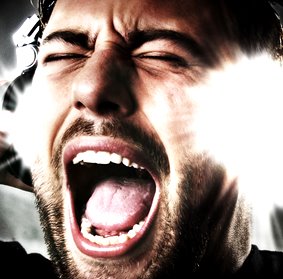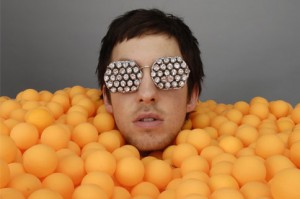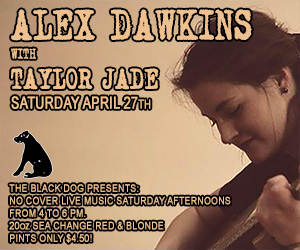ELEMENTS OF STYLE: Electronic music rules at weekend festival
Posted on April 26, 2012 By Mike Ross Front Slider, Music
 Putting aside the question of whether electronic music fans are crazier than rock fans – Northlands seemed to think so when they refused to allow alcohol to be sold at this weekend’s Elements Music Festival until a judge ordered the decision reversed – there are more basic questions for those who don’t know their “house” from a hole in the ground.
Putting aside the question of whether electronic music fans are crazier than rock fans – Northlands seemed to think so when they refused to allow alcohol to be sold at this weekend’s Elements Music Festival until a judge ordered the decision reversed – there are more basic questions for those who don’t know their “house” from a hole in the ground.
Like: What the hell are those DJs doing up there, anyway? Do they think they’re rock stars or what?
For answers, we turn to Viet Nguyen of Boodang Music Canada, producer of Elements, which runs Friday and Saturday at the Edmonton Expo Centre, featuring acts like Calvin Harris, Cosmicgate and Chase and Status, who are all big stars in the electronic music scene, or so we’re told. See? Worlds collide, but few so rarely as electronic and, er, non-electronic. This is only starting to change.
Nguyen is very helpful, assuring outsiders “there are no stupid questions.” First of all, to explain the theme of the event, there are four “Elements” represented in the four different arena areas. Within each is a different style of electronic music whose divisions are as arcane to rock people as the various subgenres of heavy metal are to rave enthusiasts. Death metal is to black metal what techno is to acid jazz. Like, do we have to label everything?
Short answer: Yes.
 “Earth” is the largest room at Elements and it represents house music – that basic modern 4-4 dance groove at 125 beats per minute or so – as heard in the “more mainstream” acts like Calvin Harris (right), who has worked with stars like Rihanna and LMFAO.
“Earth” is the largest room at Elements and it represents house music – that basic modern 4-4 dance groove at 125 beats per minute or so – as heard in the “more mainstream” acts like Calvin Harris (right), who has worked with stars like Rihanna and LMFAO.
Fire will be the land of “dub-step,” sometimes also called “drum ‘n’ bass,” for its generally big bottom end. Chase and Status would be the good example here, Nguyen says. The Wind Arena is – wait, let me guess – ambient?
“No,” says Nguyen. “That’s where the concessions are.”
Moving on: Water is trance, which is like a more repetitive house, if such a thing can be imagined.
“Trance flows more, it’s more melodic, so it goes with water better,” says Nguyen. Examples in the Water room will include the German duo Cosmicgate, which in this performance will feature singer Emma Hewitt – the only actual singer performing live at Elements.
So what do these DJs do when they’re “performing?” Must we use the nasty quote marks? Nguyen explains that the DJ-performers are indeed simply playing pre-recorded material on CDJ systems or similar (replicating vinyl-like control of CDs) – some of the music created themselves in the studio back home, and “all the good DJs produce their own music” – but with several key differences. DJs have an array of tricks up their sleeves: effects, gates, filters, samplers, loop makers, sound triggers, you name it, and will mix between two (or more) different tracks running at the same time. They can change the speed, they can change the pitch, they can plop in vocals or some synth melody at will. A great DJ can keep a groove interesting for a surprisingly long time. Hours.
Nguyen says the biggest thing “about hearing a DJ live is that you’re going to hear things you can’t get anywhere else. No two shows are the same.” You could say the same about major rock shows until you realise that a good half use pre-recorded tracks of some kind – which the musicians, unlike DJs, are not usually free to change on the fly as the mood strikes them.
Well, whatever. The two worlds aren’t so far apart after all.
To address the question originally put aside: Are dance music fans less responsible than fans of other music? Is banning alcohol at an electronic music event really the right thing to do when the real problem is bad ecstasy?
 “People’s behaviour needs to be policed – not what they’re doing for fun,” declares DJ David Stone (right), who spins his tracks at the Fire Room on Friday at 5:30 p.m. There are druggies and idiots at almost every kind of entertainment event short of the ballet (where too much perfume is the biggest problem). And while all the various music cultures are associated with their own horrible drugs – punk rock and heroin, brown acid at Woodstock, way too much alcohol consumption at the Big Valley Jamboree – to single out one for extra concern over bad behaviour is just plain wrong, Stone says.
“People’s behaviour needs to be policed – not what they’re doing for fun,” declares DJ David Stone (right), who spins his tracks at the Fire Room on Friday at 5:30 p.m. There are druggies and idiots at almost every kind of entertainment event short of the ballet (where too much perfume is the biggest problem). And while all the various music cultures are associated with their own horrible drugs – punk rock and heroin, brown acid at Woodstock, way too much alcohol consumption at the Big Valley Jamboree – to single out one for extra concern over bad behaviour is just plain wrong, Stone says.
He goes on, “I think the people interested in dance culture take a lot more personal responsibility than the public and the media give them credit for. It’s not everybody causing a problem. It’s just a few people.” And they’d do it anyway, rave or no rave.
Part of the answer is “mutual fascination,” Stone adds – rock guys wondering what all this techno stuff is about and vice versa – and “that’s the key to getting along. This is not something you have to fear. Everybody should just calm down and get along.”
Nguyen concurs, and assures the public that every security and safety precaution has been taken in putting Elements together. It’s all about “bringing the community together,” he says, whether one is into house, trance, dub step, whatever, “it’s all electronic music in the end.”













